AIRBUSTORY

1987
1987 was a year of big change in the UK school curriculum, teachers were often on
strike leaving the kids to their own devices.Gordano Comprehensive school served all of the families in an around Portishead, one of Bristol’s orbiting towns near the busy port of Avonmouth. Nick, James, Simon and Christopher all attended Gordano and their creative activities began with Chris, Nick and Simon recording music and comical monologues together. James had been jamming during lunch breaks with his friend Geoff Barrow. They had their first gig together when they were 11 years old and they would occasionally play at the school’s disco. After discussing music in a PE lesson, Nick invited James over to jam at his house during lunch breaks. With the teachers on strike, there was nobody around to watch the kids. So lunch was still served in the canteen but, then the kids could wonder off school grounds for the remainder of lunch hour.
The mutual appreciation for rock music soon inspired the formation of a band. Chris had been playing drums in the school band and was a fanatical AC/DC fan. Nick and Chris persuaded Simon to get a bass guitar. Simon was already
music savvy and a huge fan of Iron Maiden’s bass player Steve Harris.
The band would jam at each other’s houses or use the drama studio at the school.
They became friendly with head of the music block and she would often let them use the small practice rooms pictured here:
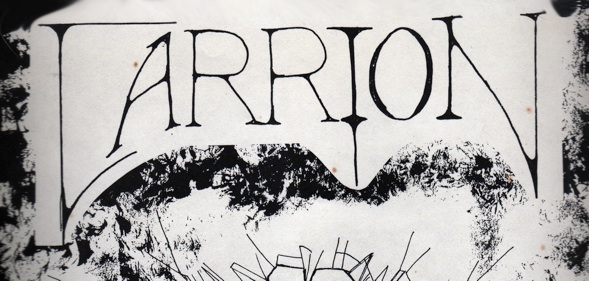
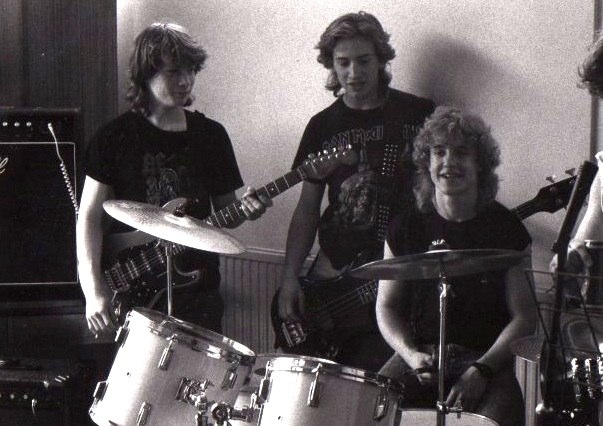
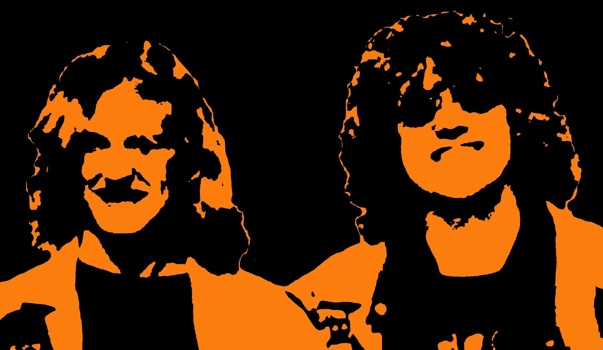
As well as the teacher’s strikes, 1988 was the first year of the new GCSE grading and the uncertainty of the looming exams. However, music seemed to nullify all that and the boys
always found time to work on their chops and soon enough school was out.
Nick, Christopher and Simon decideed to stay on for Sixth Form. This was more of a college type environment at Gordano. It was handy as it gave the band continued access to the school’s music and drama facilities.
James joined the workforce as a master engraver in the the nearby village of Portbury.
They would often hang out together listening to the latest offerings from Metallica, Anthrax, AC/DC and Iron Maiden as well as the older legends like Black Sabbath and Led Zeppelin.
They had a huge appetite for live concerts as well, collectively having, Metallica, AC/DC. Iron Maiden, Anthrax, Hawkwind, Motorhead, Wasp, Ozzy and the Rolling Stones under their belts.
So with the flavour of the time, the band was aptly named Carrion, which means dead rotting flesh.
They were soon writing and jamming their own ideas recording them on bed side cassette recorders and boom boxes. Being only 16, there were not many places that the band could play, apart from the youth center and house parties. So they would mainly concentrate in the practice room and figure out how to get into a recording studio.
Here’s a somewhat awkward picture of the band at a nearby Quarry during a lunchtime photo shoot:
1988

It was during this period that the band were becoming mobile as Nick had passed his driving test and had the use of a family business work van.
Simon was done with Sixth form and soon began working at a vintage record shop in Bristol called Plastic Wax exposing him to all sorts of music to add to his already endless knowledge. During the summer they discovered a studio that had opened on the moors in nearby village of Yatton called Walnut Bank and they had an offer on for local bands.
It was at Walnut Bank that the boys had their first recording experience and they eagerly laid down their fiery compositions that were to become Spitfire.
The song titles seemed to match the band’s morose name such as - Words of Insanity, Born to Die, Watching You, Pitch Black, Spitfire and a cover version of Thin Lizzy’s Massacre.
Here’s one of the band’s first real compositions from the Spitfire record.
1989
A production line of blue, yellow, green and red cassettes, complete with printed labels and a hand drawn Spitfire with smoke trails adorning the photocopied sleeve was set up at Christopher’s house with all four sharing duties.
The band soon began organizing shows to coincide with their new recording, starting with a function hall in the nearby town of Pill, which the band sarcastically renamed Pill Megadome. There was a genuine excitement for the event amongst the band and a coach was organized for the local young rock fans to attend.
Another notable show was organized at Portishead’s Youth center complete with pyrotechnics and a projection of Spitfires on the stage as the band chainsawed their way through the set. The explosions were a little dangerous to say the least!
Here’s the band pictured in Weston Big Wood having a good laugh.
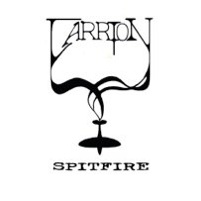
PITCH BLACK
It was the last decade of the 20th century and it signaled a big change in music commercially in the UK. The American big rock and thrash bands were being ousted by the grunge scene and the more commercially viable.
The boys seemed to recognize the change and with that they set about writing and progressing with new ideas choosing a more melodic approach without loosing the heavy rock influence.
They started to explore more of a 70’s vibe rather than the 80’s thrash styles.
So 1990 was a very important year for them musically and it also involved the upgrading of instruments.
There were no more after school practices, the band were now rehearsing at the Moose Hall in Portishead and in the gymnasium at the local youth club.
Soon they would be playing shows in Bristol and by now everyone had a car. The Bristol Bridge, Bierkeller, Mauritania, Fleece and Firkin were all to become regular haunts for the band also serving as a breeding ground for their latest ideas.
They had reached out further into Wales and landed shows in Cardiff, Newport and Tonapandy where rock music seemed to be still in full swing.
The band laid on a coach for the local rock and rollers from Portishead to come and ring in the new year at Bogiez in Cardiff.
Here’s a photo of the band back stage after the show at Bogiez.
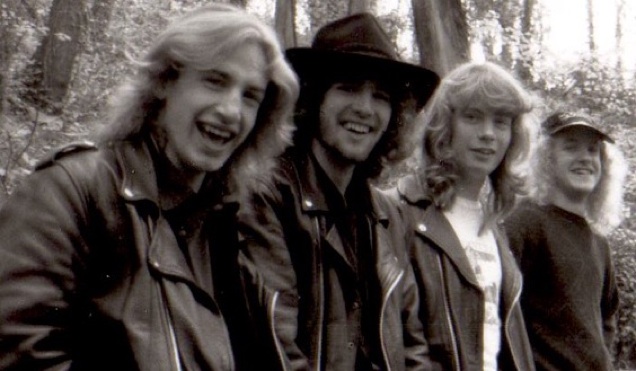
1990
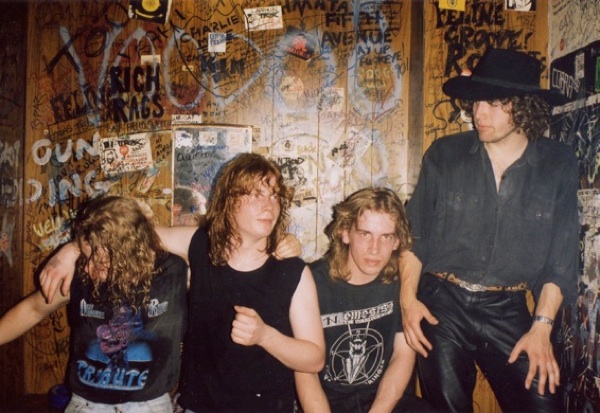
1991
The spring was spent thinking of a new name when James’s father had suggested Airbus. He had been working on the A320 Airbus project as chief design engineer at British Aerospace and thought that Airbus sounded like a good band name.
The band pondered over several names but, eventually returning to Airbus.
So there it was, Airbus was born.
Here is an interesting track called Uncle Urhee from The Apple Trees record.
Nick was at college across the river Severn in Wales at Carleon. Simon had moved into Bristol.
Christopher was still studying and also working in the sports facility at Gordano school.
James was working away at his engraving job.
April saw the band in the studio again. This time in Clifton, Bristol at a studio called Won Spirit. Christopher’s uncle Nick Snaden was working there as a sound engineer.
An album’s worth of material had been recorded that was to become The Apple Trees.
This time the recording did not match the name of the band and the boys worried that people would be put off or confused by the name when invited to the shows.

The title track “Apple Trees” would become a popular number at live shows with it’s very catchy melody, quirky lyric and sound. Here it is in all it’s glory:
The band quickly went to work on their new Apple Trees album cassette having a photo session in a local orchard on Newland’s Hill in Portishead. They employed the same production line, churning out tapes at Christopher’s house.
Airbus now seemed to be on a roll and were playing Bristol on a regular basis building on their reputation and trying out their new songs live.
After the successful session at Won Spirit the previous year, they payed another visit to that studio to record a new batch of songs known at the time as Primitive Carnival.
The boys met at Simon’s place to reflect and it turned out that they were not particularly happy with the result, about half of the tracks were unusable. Primitive Carnival was shelved! in a bid to solve the problem, the band entered a Battle of the Bands contest that was to take place at Clevedon Comprehensive school just a couple of miles to the west of Portishead. The prize was studio time.
Airbus were victorious and claimed the prize. Three tracks were recorded at a studio in Weston - Super - Mare . Along with another visit to Walnut Bank Studio where their first recordings had been made, they were able to gather enough material for their next album. It was a huge success locally “Bug and the Big Fish” really captured Airbus.
This was when the band adopted the Spira Records brand for their work.
Here is the very cool and psychedelic track called Tribe Fantastika from the album.
1992
The summer was spent playing live shows and the group was now breaking into the college circuit with friends of the band stationed all around the UK.
They even staged a Generator tour around the Avon and Bristol area resulting in a Police intervention in Bristol’s Broadmead shopping center. Tragedy struck when at the Ashton Court festival, Nick’s van was broken into and three guitars were stolen, Nick’s Gibson was gone! James’ Acoustic and Simon’s ’77 P Bass. Fortunately the Bass was retrieved when the thief tried to sell it in the store where Simon had bought it! Nevertheless momentum gathered and writing never ceased as the band entered the studio again. This time a close friend of the band Geoff Barrow financed a recording session at Coach House Studios in Clifton, Bristol. Three brand new songs, Ghost, Murder in Fashion and You Don’t Know were recorded with Geoff and Adrian Utley of the trip hop group Portishead producing and Rik Dowding engineering. The tracks were psychedelic, dark, almost spooky and were a huge contrast to the band’s current work. The experience was important and served as an introduction to production by some soon to be very successful piers.
Here is You Don’t Know from that session:
As Autumn fell, the band entered another battle of the bands contest. This time it was called
“Make the Break” and was sponsored by Kit Kat. The first heat was in Bristol and judged by Julia Simpson of local commercial radio station called GWR. Airbus made it through to the final that was to held at London’s Underworld club in Camden. The judges were Glen Tilbrook of Squeeze and Mike Howlett of 70’s prog rock band Gong and the boys were also thrilled to meet them.
The contest slogan was based on this comical 1980’s tv ad for Kit Kat.
https://www.youtube.com/watch?v=f5EZdFc3i-M
The band organized a coach to the final for it’s supporters, buttons and t-shirts for everyone with the slogan Airbus All Hallows Eve, Spooky Man Spooky and Airbus in the Underworld.
Airbus scooped the prize and celebrated at the Whitehouse hotel in London where some of thedisgruntled losing bands had filled the elevators with furniture from the lobby. The prize was £3,000 and with their winnings, they bought a full sized van, acoustic guitar, congas and a glockenspiel that all played a big part in the band’s new set and ever evolving sound.
The band were demoing their songs on Nick’s Amstrad cassette 4 track.
Bouncing of tracks allowed them to start experimenting, trying different miking techniques, writing counter melodies and then stripping back the mix to reveal more interesting compositions. Five new songs were written in this way.
Thoughts were gathering for a new single so three of these new tracks were chosen and recorded at the familiar Walnut Bank studios but, the result was unsatisfactory to the band and they swiftly went back to the drawing board.
Meanwhile, with their eyes on the prize, Airbus entered yet again another Battle of the Bands contest called “First Cut” that was to be televised and aired in May.
The event was held at the Lloyd’s amphitheater in Bristol’s opulent harbour and judged by Julia Simpson, one of GWR’s top DJs at the time.
The competition were tough but, Airbus smashed it again and walked away with the whopping £5,000 cash prize!
Here is a performance during the first heat of one of their most successful live songs of the time called Ethnicus, better known as simply “The Drum Song”.
1993
Airbus take the stage at the end the show with their highly energetic song “El Sprira”
Taking advantage of the publicity and momentum, the boys immediately set about recording their chosen single called Inertia that they had performed during the first heat of the recent contest. This time they travelled to Goldrush Studios in West Bromley, South London for the recording session. Two songs were recorded for the double A side single, Inertia and Alien Baby. The band had the 7” vinyl complete with striking art by close friend and artist Marc Bessant quickly manufactured for release in July.
Oddly enough, the success of the year’s activities led the band right back to the drawing board and the band’s insatiable appetite for writing and recording. The Inertia single
was merely an exercise in procedure for an independent label that grappled with the arduous task of trying to market a rapidly dying medium.
Whilst Airbus were appearing on TV, radio and live performances throughout 1993, there were fundamental changes taking place musically, at least in the studio.
Earlier in the year, the band had made another visit to Walnut bank studio and recorded a track called Popgun that was to be the single but, the recording was not sounding right and so Inertia had been chosen instead.
Another song was in the works called Don’t be Afraid and had a very different feel with an edgier sound.
Once again the band were invited into the studio by Geoff Barrow who seemed to share a vision with the band.
This time it was at a studio in Easton called State of Art that he had become a party to. He agreed that we should work on the new song Don’t be Afraid and the track was recorded within the day with Geoff churning out several mixes.
Here is one of the first mixes from that session along with Marc Bessant’s T shirt design:
1994
The new year was seen in at a venue called The Mauritania on Park Street in Bristol.
A coach was laid on for all the Portishead rockers who wanted to join in the festivities and rock one more time with the four lads done good.
There were appearances on Television again and Don’t be Afraid was the choice for one particular show filmed at the Gallery Mall in Bristol.
The song was rerecorded at a studio in Bath along with a track called slow that had been written when the band had recently hired a cottage in Cornwall for a week’s writing and making 4 track demos.
A new batch of songs were forming and their recent winnings were now coming to use as they were able to buy their first professional studio equipment.
(Soundcraft one inch tape machine, Studiomaster 16 track mixing console, Drawmer compressor, Roland Dep 5 effects processor and an ex BBC Studer quarter inch tape machine to master on with a ranch of good microphones).
The package was put together by Bristol’s Coachouse studio owner and technical genius Andy Allen.
Recording began immediately with the equipment being set up semi permanently at Nick’s place, The Grange.
The band would for the next two years be meeting up on most days to record, write and experiment at this location in Portishead.
With an EP in mind, tracks were recorded, mixed and mastered in no time because the band had gained so much studio experience over recent years.
Nick , Simon, Chris and James whole heartedly took to the task and formed an efficient studio team with various engineering chores rotating.
This time the band seemed to be quite happy with the results and along with more artwork from Marc Bessant, a cassette was manufactured with the title “Ghosts”
Here’s the second track from the EP. A classic called “I”(I don’t want a single thing):
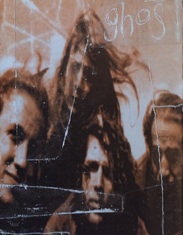
At this point Geoff Barrow and his Portishead project was really ramping up for the release of their debut LP Dummy set for August.
Airbus’ work on their Ghosts EP had really caught Geoff’s ear and he invited the band to work on a reconstruction of one of the singles from the Portishead record called Sourtimes.
However, the only clue to the song was the bassline in the verse and Beth Gibbons’ actual vocal track from their recording was provided on a DAT tape.
Somehow the band was able to write music by ear to the DAT tape and rehearsed it several times ready to return to State of Art studio to record the new version.
The recording went well and Airbus were successful in marrying their version to Beth’s vocal. She attended the session to jam vocally on the reprise type ending that the band had tagged onto the end.
Airbus were to appear at the Ashton Court free festival in Bristol that had grown to become one the biggest free festivals in Europe. So Beth, Adrian and Geoff attended rehearsals in Portishead for Beth to join the band on stage to perform Sourtimes live at the festival in July a month before their release and a good five months before Portishead’s first live show in London. Dummy was to go on and win the Mercury Music prize the following year!
Experimenting continued with the new recording gear trying out different locations to obtain different sounds.
A whole session was set up in the Gymnasium at Portishead’s Youth center.
The material was brought back to Nick’s to be worked on along with countless sessions at his place.
1994 was a long and really busy year for the band, again seeing the year out at the Mauritania.
As a release intended for America and a B side for the single, here is the Airbus version of Sourtimes.
Recording at the Grange continued throughout 1995 with Airbus now playing about with tape editing, bouncing techniques, slowing down, backwards and all the many ways of manipulating the 8 track tape format. Drums in the living room, guitars in the bathroom
and bass in the study were all daily obstacles in the house.
There was the introduction of Analog Synth and Rhodes and the band began working on
recording material for what would just be referred to as “Sound Track”
A collection of would be multi instrumental score for a fictitious Sci fi thriller.
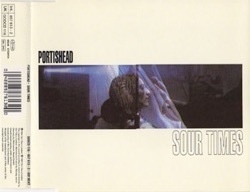
For Airbus Reconstruction of Sourtimes Click here

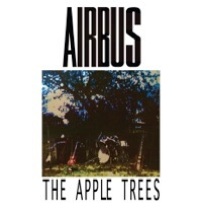

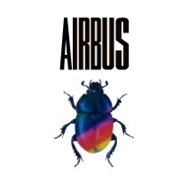
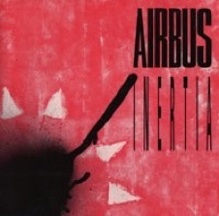
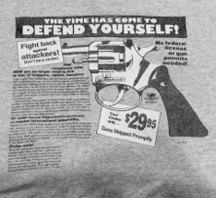
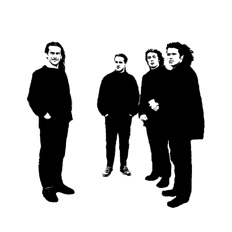
They worked again at State of Art on drum tracks and using the old BBC Christchurch studio in Clifton, Airbus were keeping busy with writing and recording with their eye on the prize, a deal.
The landlady at their local pub, The Royal Hotel allowed the boys to use a huge disused BBQ room to rehearse, store their gear and park the band’s tour van.
However, the Grange would be where they would experiment the most.
Here’s the song Animal:
Sleep Walking (The Soundtrack)
1995
1996
As label interest grew for the band, they were introduced to the manager JDB.
He was offering to help with some studio space and finding a deal.
So Airbus relocated to the countryside and set about recording on some of the latest digital recording equipment. Despite mastering how to use it, the band were not so happy with the results, so they brought their own studio gear in to compensate.
They invited producer Mike Howlett (that they had met way back in 1992 at the Make The Break show) to record two tracks with them.
Airbus began working with sound engineer Dan Redgrave who was able to work the gear well.
A number of tracks were recorded onto the one inch machine and things were sounding good, so some long months writing and recording ensued.
They made a trip down to Veryan in Cornwall for a week of writing in a secluded cottage.
Songs were selected for an EP that was called Gravity and was to be released on Spira Records.
Here’s the last track from the EP:
The EP won the attention of publishing giant BMG and the management talked. The band chose a place called Fiddler’s in Bristol to showcase for the label. Dan provided a blinding light show to match the band’s performance and shortly thereafter a deal was signed.
It provided a great boost to the band creatively and there was a sense of achievement. A time to celebrate.
They immediately hired electronic guru Andy Allen to put a 24 track 2 inch system together for the band to record on.
A Studer A80 tape machine and Soundcraft TS24 mixing console were soon up and running along with a Spring reverb and a modest amount of outboard.
With an album in mind, recording takes of new tracks and transferring ideas from 8 track never left a spare moment. Marc Bessant, who had been contributing his artwork was now set up at the same facility and aligning his routine with the band’s.
Sometimes sessions would be attended by the A&R man from BMG Charlie Dilks over seeing things develop.
The band were in the studio for a long time:
1997
1998
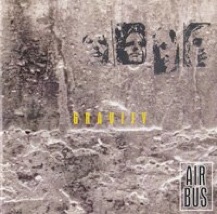
PLANET X

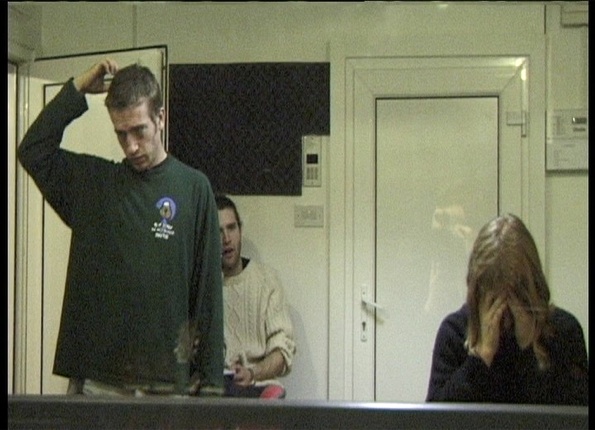
After about a year Airbus parted ways with their manager, he quit after he was called out on a few things by the label. So after some agonizing months of Bunker mentality, the band relocated to a vacant studio space in Bristol known as Antenna.
The spot was perfect, everybody lived close by and all the gear was moved in.
Dan had returned to his on the road profession and Airbus were firmly back to engineering themselves.
Starting the year with a new batch of songs to record.
The band would spend 8 to 10 hours at the studio each day and have the weekends off but, they’d always managed to maintain a steady live presence.
Recording content for the album became the main agenda as they settled into their new digs. Then their A&R guy at BMG left the company but, did leave a huge pair of studio speakers behind to use! They continued to work unabated throughout the year with Nick pretty much as liaison to London.
Several trips to the country and frequent shows kept the band active on the gigging circuit there was talk of Glastonbury Festival for the following year.
They flew down to Nice in South France to play a week’s residency at a bar to change things up. Deciding what exactly was going to be worked on for the new album, they named it Ghosts, a title they had used previously for 1994 EP but, seemed to like. There were ideas from the cottage sessions, stuff from The Grange, JDB’s and Antenna that were all brought to light.
BMG had lent them a small DV handy cam to document things on which began rolling immediately.
A showcase was organized at the Fiddlers club in Bristol, this time there was interest from America and talks were underway with Warner Bros.
However, Airbus continued to work with the alternative plan which, was to release the album on Spira Records and all other outside influence ceased.
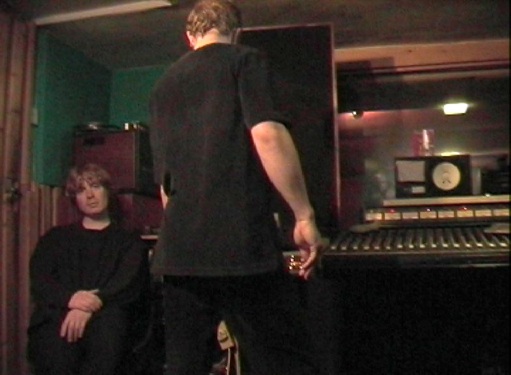
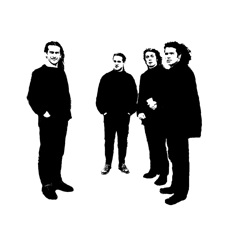
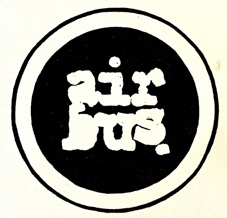
HOLD OF ME
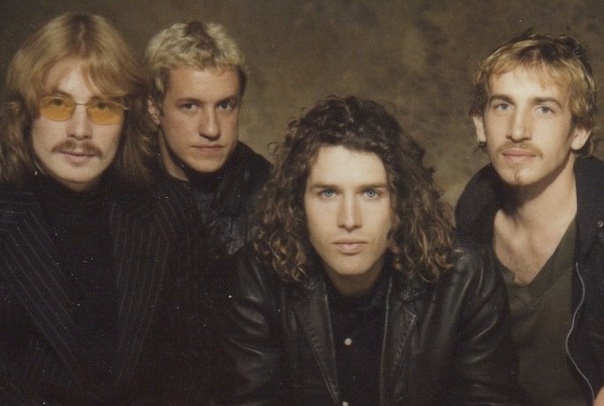
ANIMAL
1999
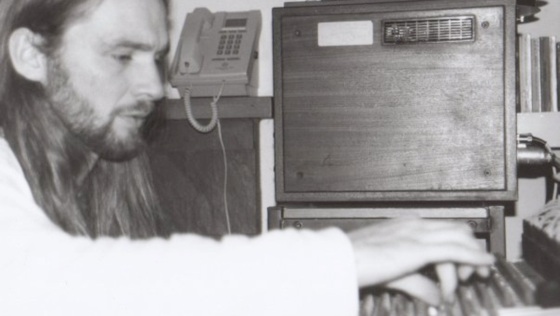
Dan Redgrave working with Airbus in the studio
INERTIA
DON’T BE AFRAID
Airbus at Nice Airport
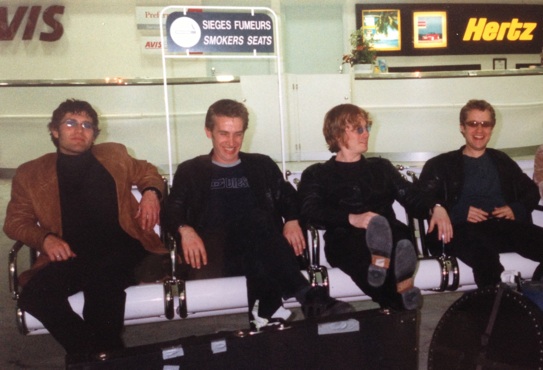
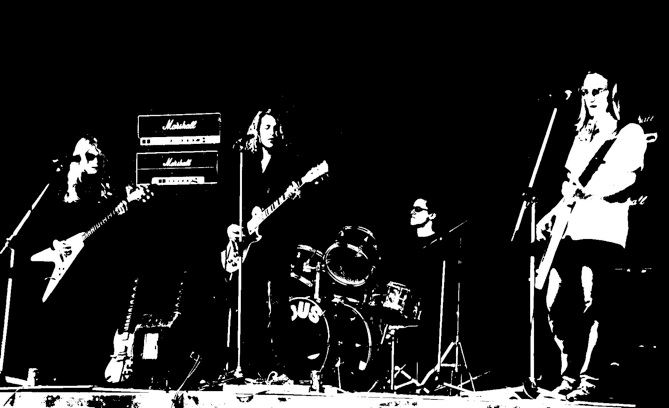
This was it, the band would finish the album this year and move on.
Work would start at 11am and finish around 7pm each week day throughout the
year. They managed to keep up live appearances between their almost 9 to 5 schedule, including an appearance on the New Stage at Glastonbury.
With the completion of the new album in sight, work began on the band’s first website to coincide with the release.
It was to become one of the world’s first interactive flash music websites.
Nick worked closely with Chris’ brother Dave Fielden and Marc Bessant on how to present it.
It can be viewed here: http://archive.bluetree.co.uk/airbus/
In the studio Airbus continued to record...
Here’s a soulful version of Get My Feet that was originally intended for the album:
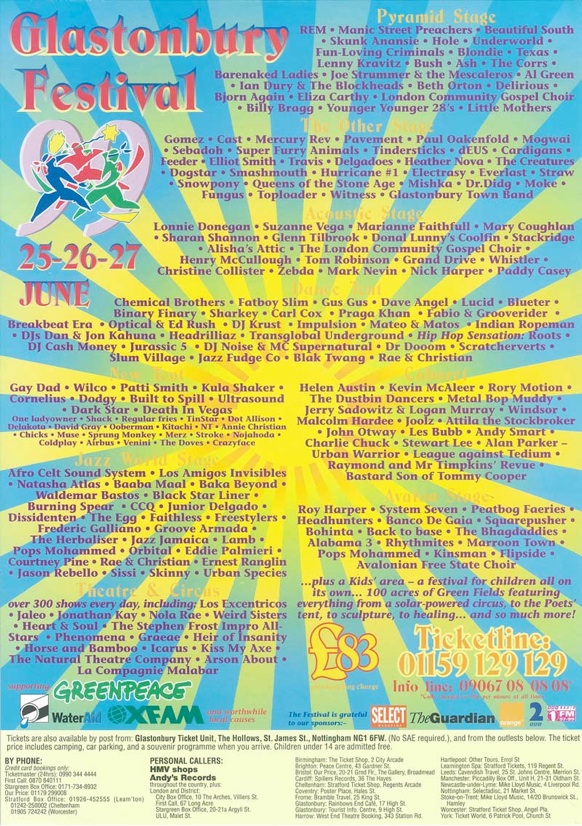
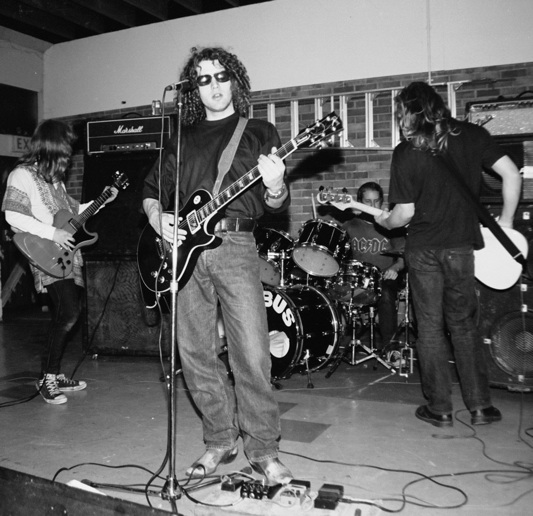
YOU DON’T KNOW
TRIBE FANTASTIKA
Alas the album was completed as much as it was going to be and went off for mastering at Abbey Road and manufacture complete with booklet designed by Marc Bessant.
The release would be planned for the new year, the Millennium.
Meanwhile, to avoid twiddling thumbs and thinking about the future, the band again flew down to Nice for a residency, then it was time for the turn of the century!

GET MY FEET
APPLE TREES
UNCLE URHEE
2000
Finally the Ghosts album was released and with that, there was a release party held at the Cube, in Bristol. A disused theater slash night club.
Simon had arranged for a John Carpenter movie to be shown and Geoff Barrow handled the DJ duties and Airbus performed the album’s material.
Here’s the poster for the event with hand drawn heads pasted onto a John Carpenter movie poster from the 70s:
Airbus toured the UK, played at the Ashton Court Festival again in support of their album.
There was a need for change.
A good friend and Champion of the band Peter Jackson had recently visited Los Angeles and told the band that they should play this place in Hollywood called the Viper Room.
Pete offered to set the show up if the band wanted to go, so he was hired.
The studio was becoming more and more redundant as the record was out and the band were busy promoting it. Change was in fact coming as the contract with BMG would be up shortly.
The label strongly disagreed with Airbus going to America but, the band were looking for help with production and California seemed like a good place to start looking.
The name Chris Goss kept surfacing because of his work on his Blue Garden album by Masters of Reality and the first Queens of the Stoneage album that Airbus were exposed to in 1998.
The band’s gear was relocated to James’ place in Portishead and set up for work.
Completely unaware of what was coming, they stepped on the plane and headed for California for two weeks in December.
They indeed played at the The Viper Room and several other venues in the city.
Having won the attention of several producers, producer managers in the process, Simon unusually disappeared with a close friend sightseeing until the final show, there was a general feeling that something was up?
When the band returned to UK after the trip, Simon had quit the band!
An end of an era.
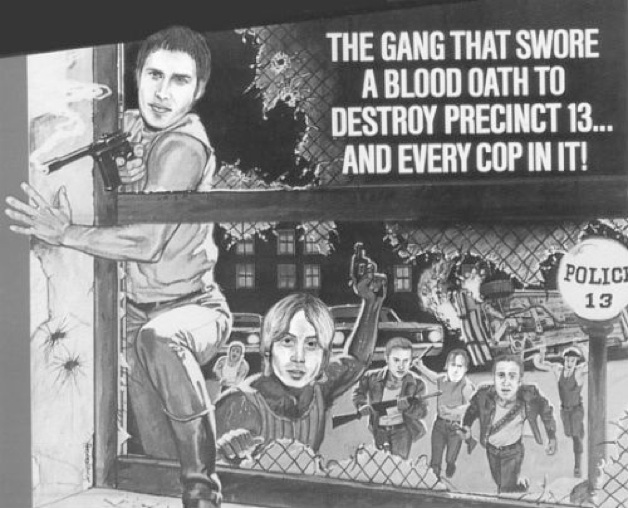
Airbus were planning to return to the States in February 2001 to continue looking for a producer with contacts that they had made on the last visit.
After several auditions, Oliver Morris, a welsh musician had joined the group for the next visit.
Two sessions were set up by producer manager Aaron Jacoves with Rick Parker (Sparkle Horse) who had a studio called the Sandbox and Andy Sturmer who was former drummer and frontman for 90’s band Jellyfish.
The band played another show at the Viper Room and then made their way back to the UK.
They played a well received show at Bristol’s Fleece and Firkin.
Oliver only made it to that show and did not return to America again.
At their Viper Room show, they had noticed a talented musician who was playing Bass with one of the bands on the bill..
His name was Sargon Dooman and he agreed to play bass with Airbus when they returned to LA in April 2001.
During the next 3 months, they would hook up with Fleetwood Mac producer Richard Dashut.
Another trip to America in August would bring the band closer to their goal as Richard was interested in signing the band to Immergent Records in LA.
However, tragedy struck in the form of 911.
2001
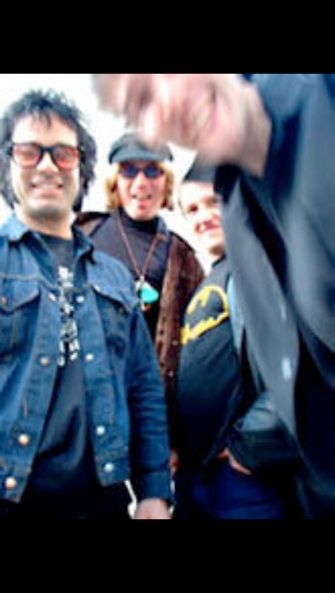
By this time Nick and James were both resident in California and Chris returned home to the UK. In the new year of 2002 Chris flew back out to join Airbus for more sessions, more shows
and what seemed to be months of friends getting married.
Nick and James returned to UK for their weddings that were bridged by another retreat to Nice in France where another wedding was happening!
Chris would not make it back to the States.
Finally in August 2002, Airbus took to Ocean Studios in Burbank, this time with Peter Finestone of Bad Religion Drumming, Great takes of good songs but, without Chris and Simon and after 15 years, Nick and James had decided that it was probably time to move on.
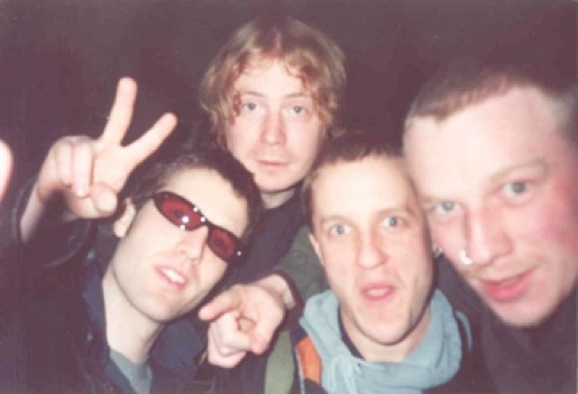
2002